Aviation Weather Test 4 (Lessons 13,14,15)
1/87
There's no tags or description
Looks like no tags are added yet.
Name | Mastery | Learn | Test | Matching | Spaced |
|---|
No study sessions yet.
88 Terms
Turbulence
Irregular motion of an aircraft in flight caused by convective turbulence, mechanical turbulence, and wind shear.
Convective turbulence
Type of turbulence caused by rising and falling of air due to uneven heating of the earth’s surface.
When is convective turbulene most active?
Warm afternoons when winds are light
Where is the best place to be to avoid turbulence?
Above clouds
Mechanical Turbulence
Caused by obstructions to wind flow such as trees, buildings, and mountains.
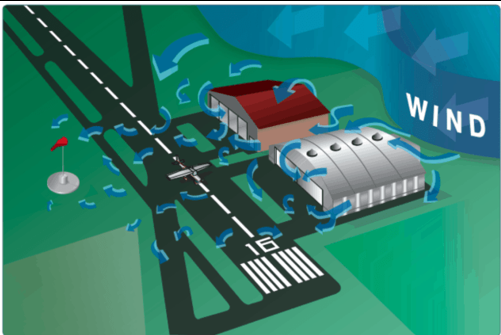
How is intensity of mechanical turbulence determined?
Wind speed and roughness of obstruction.
What equals a greater mechanical turbulence?
Higher wind speeds and rougher surface.
Wind shear turbulence
Sudden, drastic change in wind speed and direction over a small area.
How does wind shear generate turbulence?
Between two wind currents of different directions/speeds.
Where does strong wind shear often occur?
Across temperature inversion layers, which can generate turbulence.
How do mountain waves occur?
When wind blows toward a mountain and is forced to rise over the peak.
What happens when wind crosses over the top of a mountain?
It oscillates/ creates a series of waves on the downwind side just like water waves.
Necessary Ingredients for mountain waves to develop?
Strong winds (so winds can get over a mountain)
Stable air
Wind direction needs to be perpendicular to the mountain range
When do the most severe mountain waves occur?
when the large-scale winds are strongest from late fall to early spring.

Gravity waves
Form when air is disturbed, and gravity tries to pull the air back to its original position causing it to wave.
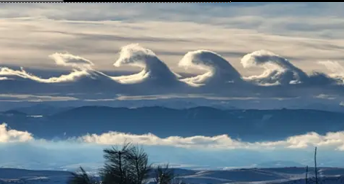
Kelvin-Helmholtz (K-H) Waves
Vertical waves generated by wind shear.
What clouds are an indicator of wind shear?
Kelvin-helmholtz clouds and can be associated with moderate turbulence.
Vertically Propagating Mountain Waves (AKA wave breaking)
Region of updraft/ rising warm air above ridge. With a wave of sufficient amplitude the aircraft flying through would experience “wave action”.
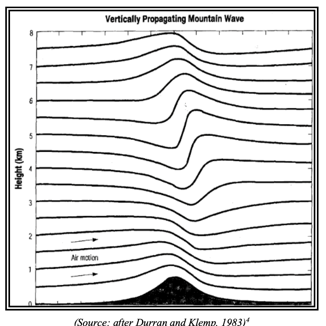
Trapped Lee Waves
Waves that form on the lee side (dry) of a mountain when stable air flows over it. These waves stay near the surface and dont rise high.
What Can Trapped Lee Waves Cause?
Strong winds and turbulence near the ground and might form lenticular clouds on lee side.
Rotors
Swirling airflow that forms beneath a large airflow, associated w/ mountain waves.
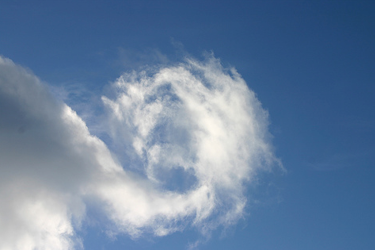
What can rotors produce?
Severe to extreme wind shear and turbulence, need to avoid at all costs.
Cap Cloud
Forms along the top of a mountain due to orographic lift, appears stationairy like a hat over the mountain.
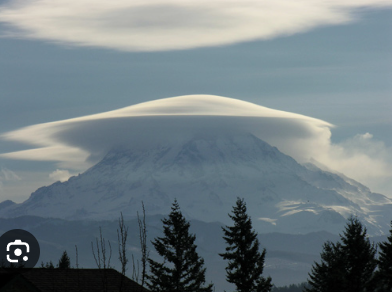
Lenticular clouds
Lens-shaped cloud, most common and most prevalent clue that mountain waves are present.
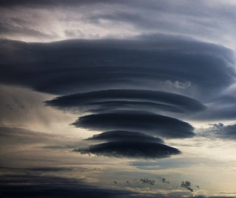
Subtropical High-Pressure Belts
Regions of persistent high pressure found around 30 degrees latitude
What are subtropical highs a result of?
A direct result of the convergence between the Hadley and Ferrell cells.
What do highs separate?
Easterly trades from the prevailing westerlies.
Why do lows form over land?
Because land is warmer in summer compared to the ocean.
Why do lows form over water?
Because water is warmer in winter compared to the land.
Continental Weather
The way a high pressure system rotates, clockwise in the northern hemisphere.
Bermuda High/ Azores
A semi permanent high pressure system that stays near the Atlantic or moves towards Europe.
Monsoons
A seasonal wind pattern that brings dramatic changes in weather, affecting tropical and subtropical regions.
Summer Monsoon Weather
Wet and moist weather.(low pressure)
Winter Monsoon Weather
Dry air with no rain(high pressure)
Flying Weather Winter Monsoon
Flying conditions are excellent over dry regions. Over water there are thunderstorms due to the moisture.
Flying Weather Summer Monsoon
Showers and thunderstorms are frequent over land.
Transitory System
Transition zone between two different air masses.
Troughs And Ridges
Elongated areas of high and low pressure. Trough= Low, Ridge= high.
Tropical Wave
An elongated area of low pressure, also known as an inverted trough that moves across the tropics.
How Are Tropical Cyclones/ Hurricanes Classified?
According to their wind speed intensity.
Saffir-Simpson Hurricane Wind Scale
Measures hurricane intensity based on wind speed.
Necessary Ingredients For A Hurricane
Warm surface temperatures (at least 26.5 degrees C)
Minimal vertical wind shear
A tropical wave
What Is A Hurricane?
A low pressure system with no fronts attached.
What Occurs In The Eye Of A Hurricane?
Skies are free of turbulent clouds and wind is light.
What Occurs In The Eyewall Of A Hurricane
Heavy rain and the strongest winds of the storm.
North Pacific High Pressure System
Semi permanent area of high pressure in the pacific ocean.
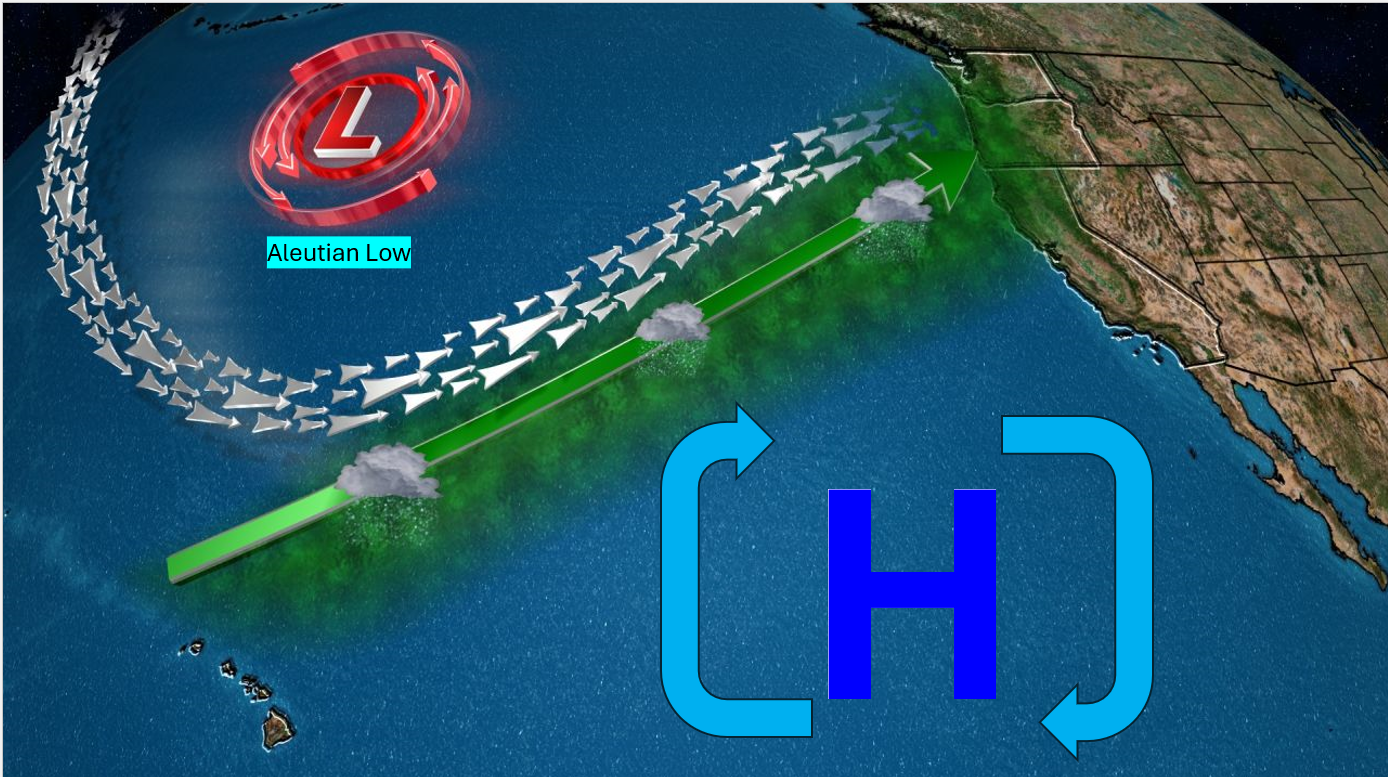
Fog
A visible collection of minute water droplets that are based at the earth’s surface.
How does fog differ from clouds?
Fog bases are at the earth’s surface while clouds are above the surface.
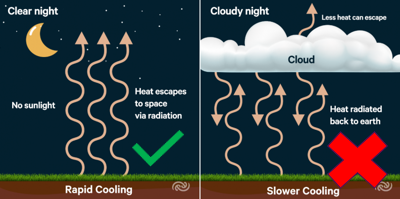
Radiation Fog
Produced when the ground cools down overnight after a clear, calm day.
Ingredients For Fog
Little to no cloud cover, higher chance of fog forming with less clouds
Light winds
Sufficient moisture
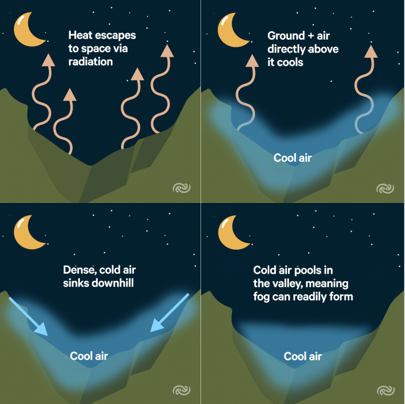
Mountain/Valley Fog
Ground cools as the heat from the day is released from the ground back into the air near the surface. Denser, cooler air on mountaintops sinks into valleys and collects there and temp lowers closer to depoint which results in fog formation if enough moisture.
Advection Fog/ Sea Fog
Occurs when the wind pushes warm, moist air over a cooler sea surface which causes the sea surface to cool the air directly above it causing condensation of water vapor to fog.
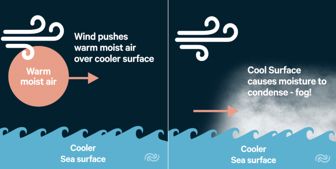
Where does advection fog primarly form?
Over the sea

Upslope Fog
Forms when moist, stable air is adiabatically cooled to or below dew point as it moves up a sloping terrain.
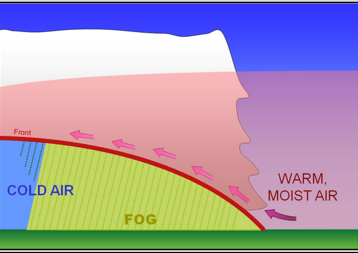
Frontal Fog
Forms when warm air meets cold air at a front.
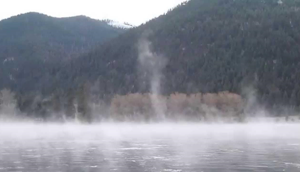
Steam Fog
Occurs when cold air moves over a warmer water surface. Air close to the water surface is warmed and moistend by the water underneath which makes the air buoyant and rise.
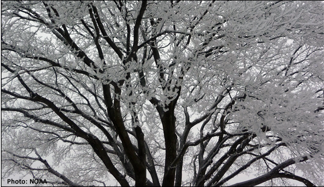
Freezing Fog
Occurs when temperature falls to below freezing and fog is present.
What is more of a visibility problem fog or mist?
Fog
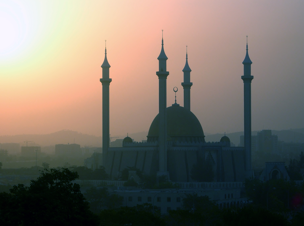
Haze
Caused by sunlight interacting with pollution particles in the air which absorb and scatter light.
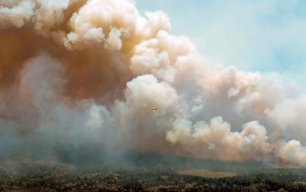
Smoke
Suspension in the air of small particles produced by combustion due to fires, burning, or other sources.
Precipitation
Any form of water particle that falls from the atmosphere to the ground.
Dust Storm
Severe weather condition caused by strong winds and dust-filled air over a large area.
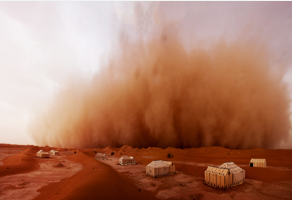
Sandstorm
Larger and heavier than dust particles but over a smaller area.
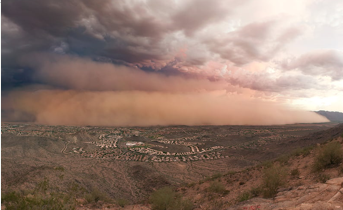
Haboob
A dust storm or sandstorm that forms as cold downdrafts from a thunderstorm turbulently lift dust and sand into the air.
What do you need for a haboob to form?
A thunderstorm

Volcanic Ash
Made up of fine particles of rock powder from a volcano and can stay in the atmosphere for long periods.
What can a radar not detect when it comes to volcanic ash?
Fine airborne ash and the ash cloud as it spreads downwind of the volcano.
What can a radar detect when it comes to volcanic ash?
Heavy concentrations of airborne ash near the volcano.
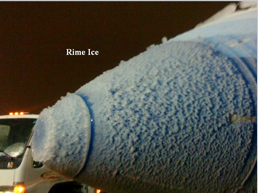
Rime Icing
Rough, milky, and “cloudy” ice formed by the instant freezing of small, supercooled water droplets after they strike an aircraft.
What does rime icing favor?
Colder temperatures, lower liquid water content, and small droplets.
What temperature does rime icing occur?
Colder than -15 degrees C.
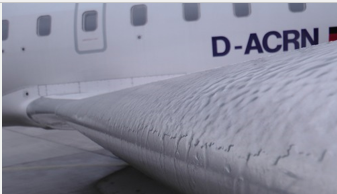
Clear Icing
Glossy,clear ice formed by relatively slow freezing of large supercooled water droplets.
What temperature does clear ice form?
Warmer than -10 degrees C.
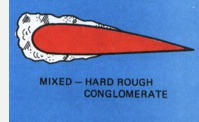
Mixed Icing
A mixture of rime and clear icing.
What is icing potential heavily dependent on?
Temperature
First icing factor
Supercooled water content is important in determining how much water is avaliable for icing.
Second icing factor
Outside air temperature must be below 0 degrees C b/c almost all icing occurs between 0 degrees C and -20 degrees C.
What altitudes does peak icing occur?
Near 10,000 feet with half of incidents occuring between 5,000-13,000 feet.
What is the third icing factor
Droplet size
What type of aircraft is generally less vulnerable to icing
Commercial jet aircraft.
Why are light turboprop aircraft more susceptible to icing?
They fly at lower altitudes where icing is more common at slower speeds.
Where does icing in stratiform clouds typically occur?
Large layered clouds like stratus or altostratus where moisture is widespread.
What is icing in cumuliform clouds known as?
Convective icing
How severe is Icing in cumuliform clouds?
Generally more severe than in stratiform clouds due to strong updrafts and vertical development.
What can cumuliform clouds produce?
Clear ice
What do Stratiform Clouds produce?
These clouds produce light to moderate icing.
Where are higher levels of supercooled water found?
Cumuliform clouds
Where are lower levels of supercooled water found?
Stratiform clouds